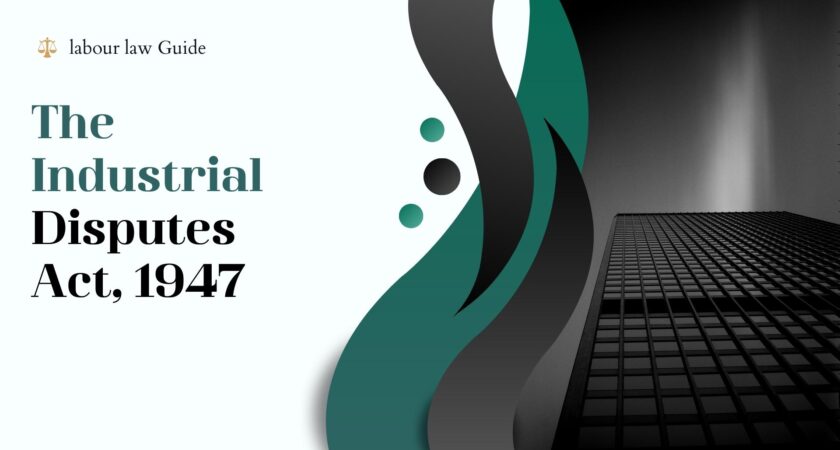Introduction
The Industrial Disputes Act, 1947, is a significant piece of Labour legislation in India. Enacted to promote industrial harmony and resolve disputes between employers and employees, it applies to both organized and unorganized sectors. The Act provides a legal framework for addressing various aspects of Labour-management relations, including disputes, layoffs, retrenchments, and collective bargaining.
Background of Hulkai Company
Hulkai Company, located in Lucknow, India, is a medium-sized manufacturing firm that specializes in the production of automotive components. As of the year 2023, the company has a workforce of approximately 1500 employees. The company has experienced steady growth over the years, and its success has brought about an increase in the scale of operations and the complexity of Labour-management relations.
Application and Impact on Hulkai Company
The introduction of The Industrial Disputes Act, 1947, had several implications for Hulkai Company
-Employee Relations Enhancement:
The Act mandated the establishment of Grievance Redressal Committees and Workers’ Committees to facilitate open communication between management and employees. Hulkai Company established these committees, which provided a platform for addressing grievances and resolving disputes at an early stage. This improved employee relations and boosted morale.
-Dispute Resolution Mechanisms:
With a growing workforce, the likelihood of disputes arising also increased. The Act required the formation of a Works Committee in organizations with more than 100 employees. Hulkai Company complied with this provision, which helped in the prompt resolution of minor conflicts before they escalated into major disputes.
-Layoffs and Retrenchments:
The Act imposed certain conditions on layoffs and retrenchments, ensuring that they were carried out fairly and without arbitrary decisions. Hulkai Company had to adhere to these conditions, leading to a more transparent and just process for downsizing, if necessary.
-Collective Bargaining:
The Act recognized the importance of collective bargaining for ensuring fair wages and better working conditions. Hulkai Company had to engage with trade unions and employee representatives for negotiations. This led to a more structured and organized approach to addressing employee demands.
Impact and Consequences on Company’s Working:
The impact of The Industrial Disputes Act, 1947, on Hulkai Company’s working was both positive and challenging:
– Improved Employee Relations: The Act’s provisions encouraged open dialogue between employees and management, leading to better understanding and harmony.
– Effective Dispute Resolution: Disputes were addressed promptly through established committees, preventing disruptions to production.
– Transparent Layoffs: Layoffs and retrenchments became more transparent and fair, minimizing resentment among employees.
Challenges
– Increased Compliance Burden: Adhering to the Act’s provisions necessitated additional administrative work and legal compliance measures.
– Collective Bargaining Pressure: Engaging with trade unions and negotiating with employee representatives required time and resources.
– Potential Disruptions: Failure to address employee concerns could lead to disruptions, affecting productivity.
Conclusion
The introduction of The Industrial Disputes Act, 1947, had a substantial impact on Hulkai Company’s operations. While it brought about positive changes in employee relations, dispute resolution, and fairness in Labour practices, it also presented challenges in terms of compliance and negotiation. Overall, the Act played a crucial role in shaping the Labour-management dynamics within the company and contributed to a more balanced and equitable work environment.
Disclaimer: Any characters, companies, or situations in this case study are created solely for illustrative purposes and do not correspond to any existing entity. This case study uses a fictional scenario to present principles of “Industrial Disputes Act” compliance.
